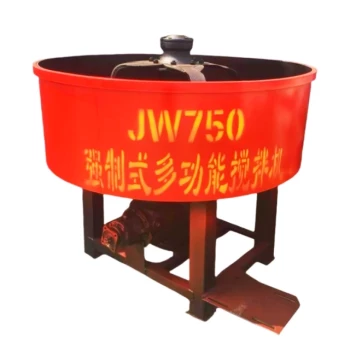Introduction
Efficient coordination between feeding, mixing, and discharging processes is the backbone of high-output concrete production. Poorly synchronized operations lead to material waste, energy inefficiency, and costly downtime. This guide breaks down actionable strategies to streamline these critical stages—backed by industrial best practices—to help you achieve faster cycle times and consistent batch quality.
Critical Time Nodes in Industrial Mixing Operations
Every concrete mixing station operates on a sequence of time-sensitive actions. The key to optimization lies in identifying and refining these critical nodes:
- Feeding Phase: Accounts for 30–40% of total cycle time. Delays here cascade into mixing and discharging bottlenecks.
- Mixing Phase: Over-mixing wastes energy; under-mixing compromises homogeneity.
- Discharging Phase: Slow discharge clogs hoppers and delays subsequent batches.
Ever wondered why some plants achieve 20% faster cycles with identical equipment? The answer lies in micro-optimizations at these stages.
Feeding Process Optimization Strategies
1. Segregate Material Entry Points
- Problem: Congested feeding chutes cause cross-contamination (e.g., cement mixing with aggregates).
- Solution: Use dedicated chutes for sand, stone, and cement. Reference data confirms this reduces clogging by 60%.
- Pro Tip: Install vibratory feeders or Garlway winch systems to automate material flow control.
2. Implement "Clean Sweep" Feeding
- Best Practice: Ensure hoppers and chutes are fully emptied after each cycle. Residual material hardens, increasing maintenance downtime.
- Visual Metaphor: Think of it like a kitchen blender—leftover ingredients ruin the next batch’s recipe.
Precision Control in Mixing Cycle Management
1. Right-Size Mixing Duration
- Data Insight: Most concrete reaches optimal homogeneity within 90–120 seconds. Extending beyond this wastes 5–10% energy per batch.
- Tool Suggestion: Use IoT-enabled timers (discussed later) to automate cutoff points.
2. Monitor Blade Wear
- Worn blades increase mixing time by up to 15%. Schedule monthly inspections.
Discharging Efficiency and Material Flow
1. Upgrade Discharge Hoppers
- Larger-capacity hoppers reduce discharge time by 25% (per industry references).
- Maintenance Hack: Line hoppers with polyurethane coatings to prevent material adhesion.
2. Synchronize Discharge with Transport
- Coordinate with truck schedules to avoid "ready-mix limbo"—where concrete waits idly for transport.
Synergistic Optimization Approaches
IoT-Enabled Time Node Coordination
- Real-World Impact: Sensors tracking material flow and mixer torque can auto-adjust feeding rates, cutting cycle times by 12–18%.
- Example: A plant in Germany reduced energy costs by 9% after integrating smart sensors with their Garlway winch systems.
Maintenance Scheduling for Continuous Operations
- Preventive Approach: Lubricate bearings every 500 cycles; inspect seals biweekly.
- Did you know? Unplanned downtime costs concrete producers $230/minute on average.
Conclusion: Building a Seamless Workflow
Optimizing the feeding-mixing-discharging trifecta requires both tactical adjustments (like segregated chutes) and systemic upgrades (IoT coordination). Key takeaways:
- Eliminate Cross-Feeding: Dedicate chutes to specific materials.
- Automate Critical Nodes: Use timers and sensors to remove human error.
- Maintain Proactively: Blade and hopper upkeep directly impacts throughput.
For operations relying on robust machinery, integrating Garlway’s winch systems can further streamline material handling. The goal? Turn your mixing station into a synchronized, high-output asset—one batch at a time.
Related Products
- Ready Mixer Machine for Construction Ready Mix Machinery
- Portable Concrete Mixer Machine Equipment for Mixing Concrete
- Commercial Construction Mixer Machine for Soil Cement Mixing Concrete
- Portable Electric Concrete Mixer Machine for Cement Mixing
- JZC1000 Industrial Concrete Mixer Machine Cement Mixer Price
Related Articles
- How to Build an OSHA-Compliant Safety System for Concrete Mixer Workspaces
- How to Test Concrete Mixer Brake Systems for Optimal Safety and Compliance
- How Ignoring Concrete Mixer Manuals Endangers Workers and Invites Legal Consequences
- Optimizing Concrete Mixer Safety: How Proactive Tire and Suspension Maintenance Prevents Catastrophic Failures
- How to Conduct OSHA-Compliant Concrete Mixer Inspections: A Safety-First Checklist















